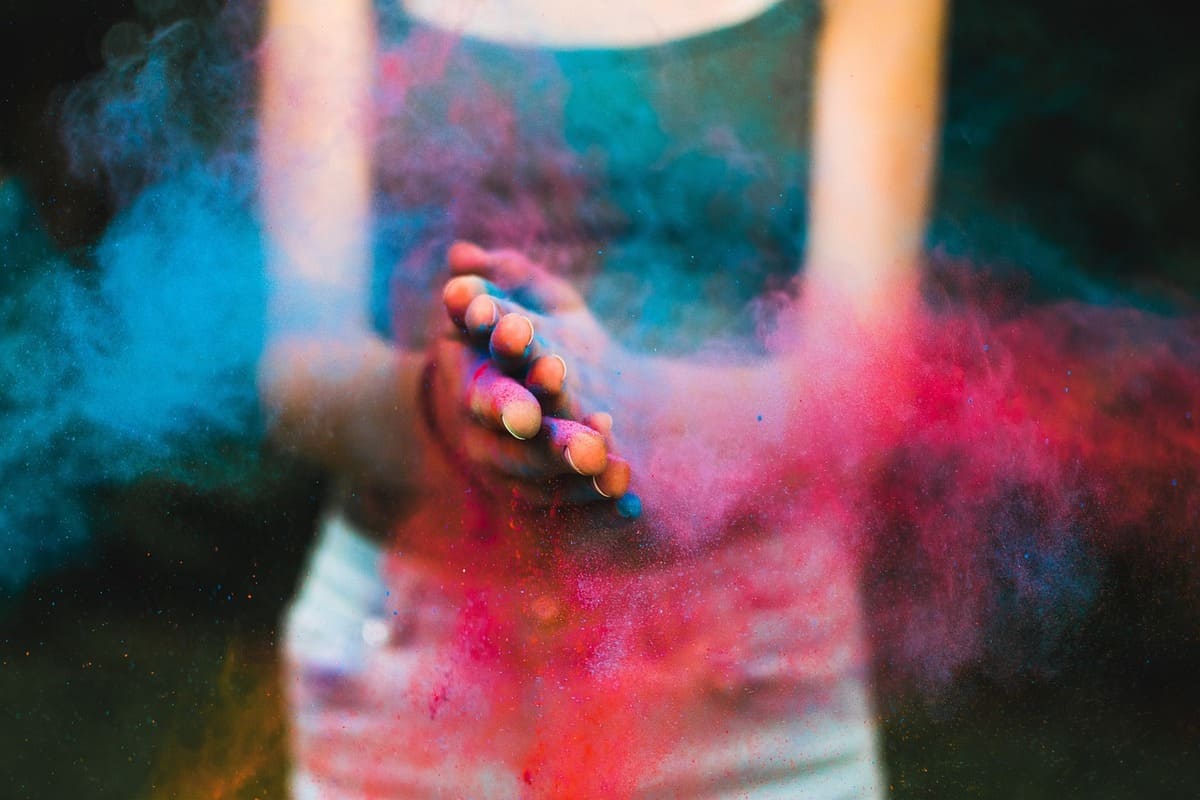
Why Vein Color Matters: A Closer Look
By Emma Jones - 7/15/2025
Ever glanced at the veins on your wrist and wondered why they appear blue, green, or even purple? It turns out, the color of your veins can reveal more about your body than you might think. Let's dive into the fascinating world of vein colors and explore why they matter for your health, skincare routine, and even fashion choices.
The Science Behind Vein Colors
It's Not About the Blood
First things first: despite what you might have heard, the blood in your veins is always red. So why do we see different colors?
- Blue Veins: These appear blue due to how light penetrates the skin and reflects off the veins. Deeper veins often look blue because blue light doesn't penetrate the skin as deeply as red light.
- Green Veins: A combination of the blue reflection and the yellowish tint of fat or skin tissue can make veins appear green.
- Purple Veins: These might indicate deeper veins or occur in areas where the skin is thinner.
Factors Affecting Vein Color
Several factors can influence how your veins appear:
- Skin thickness
- Depth of the vein
- Surrounding tissue composition
- Lighting conditions
- Skin tone
Health Implications of Vein Color
While vein color alone isn't a diagnostic tool, it can sometimes hint at underlying health conditions:
Blue Veins
- Normal: Generally considered typical, especially in fair-skinned individuals.
- Potential Concerns: Extremely prominent blue veins might indicate venous insufficiency or varicose veins.
Green Veins
- Normal: Common in individuals with warm or olive undertones.
- Potential Concerns: Rarely associated with specific health issues, but sudden changes should be noted.
Purple Veins
- Normal: Can be typical, especially in areas with thin skin like eyelids.
- Potential Concerns: Might indicate venous congestion or bruising if suddenly appearing.
Red Veins
- Normal: Surface level veins or capillaries can appear red.
- Potential Concerns: Sudden appearance of red veins could indicate inflammation or skin conditions like rosacea.
Vein Color in Skincare and Beauty
Determining Skin Undertones
One of the most practical applications of vein color is in determining skin undertones:
- Blue or Purple Veins: Often indicate cool undertones.
- Green Veins: Usually suggest warm undertones.
- Both Colors Equally: Might point to neutral undertones.
Understanding your undertones can help you:
- Choose the right foundation shade
- Select complementary clothing colors
- Pick the most flattering hair color
Customizing Your Skincare Routine
Vein color, as an indicator of skin undertones, can guide your skincare choices:
- Cool Undertones: Might benefit from products that combat redness.
- Warm Undertones: May need extra sun protection due to higher melanin content.
- Neutral Undertones: Often have the most flexibility in product choices.
Medical Uses of Vein Color Assessment
Healthcare professionals sometimes use vein color as part of their assessments:
Phlebotomy
- Vein visibility and color can help phlebotomists choose the best vein for blood draws.
- Blue veins are often preferred due to their visibility and typical size.
Circulatory Health
- Changes in vein color or sudden prominence can indicate circulatory issues.
- Doctors might note vein color as part of a broader examination of circulatory health.
Vein Color and Fashion
Believe it or not, understanding your vein color (and thus, your undertones) can influence your fashion choices:
- Cool Undertones: Often look best in silver jewelry and colors like blue, purple, and emerald green.
- Warm Undertones: Tend to shine in gold jewelry and colors like orange, yellow, and olive green.
- Neutral Undertones: Can usually rock both gold and silver, with a wide range of flattering colors.
Common Myths About Vein Color
Let's debunk some misconceptions:
Myth: Blue veins mean you're of royal blood. Reality: Vein color has nothing to do with lineage or blood type.
Myth: Green veins indicate toxicity or illness. Reality: Green veins are perfectly normal and usually just indicate warm undertones.
Myth: You can change your vein color through diet or exercise. Reality: While overall health can affect vein appearance, you can't fundamentally change their color.
When to Be Concerned About Vein Color
While vein color variations are usually harmless, there are times to seek medical advice:
- Sudden changes in vein color or prominence
- Veins that are painful, itchy, or warm to the touch
- Veins accompanied by skin discoloration or ulcers
- Consistently swollen or bulging veins
Embracing Your Unique Vein Map
Remember, the color of your veins is just one small part of what makes you unique. Whether your veins are blue, green, or a mix of both, they're a normal part of your body's incredible circulatory system.
Understanding your vein color can offer insights into your skin tone, guide your fashion and beauty choices, and even provide clues about your overall health. But at the end of the day, all vein colors are normal and beautiful in their own way.
So the next time you glance at the veins on your wrist, remember: you're looking at your body's own unique blue-green map, telling a story that's entirely your own. Embrace it, learn from it, and use that knowledge to make choices that help you look and feel your best.
Take your style to the next level with a professional analysis
You already know the theory. Now discover exactly which colors and styles enhance your personal image.
Loading...
Complete PDF report in less than 5 minutes
Your color season and personalized palette
Specific makeup and clothing recommendations
Based on professional color analysis
One-time investment:
One-time payment, no subscriptions. Instant access.